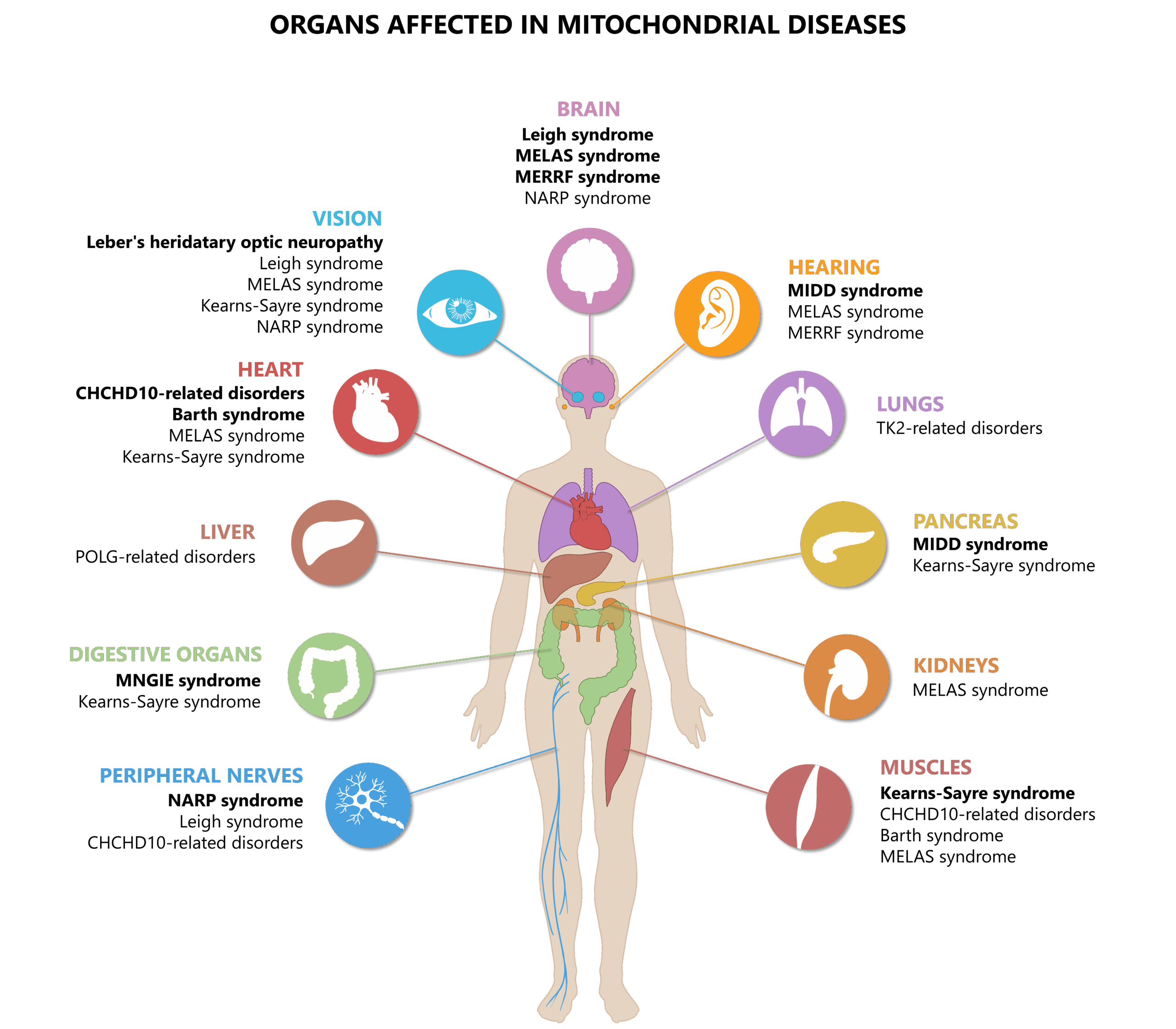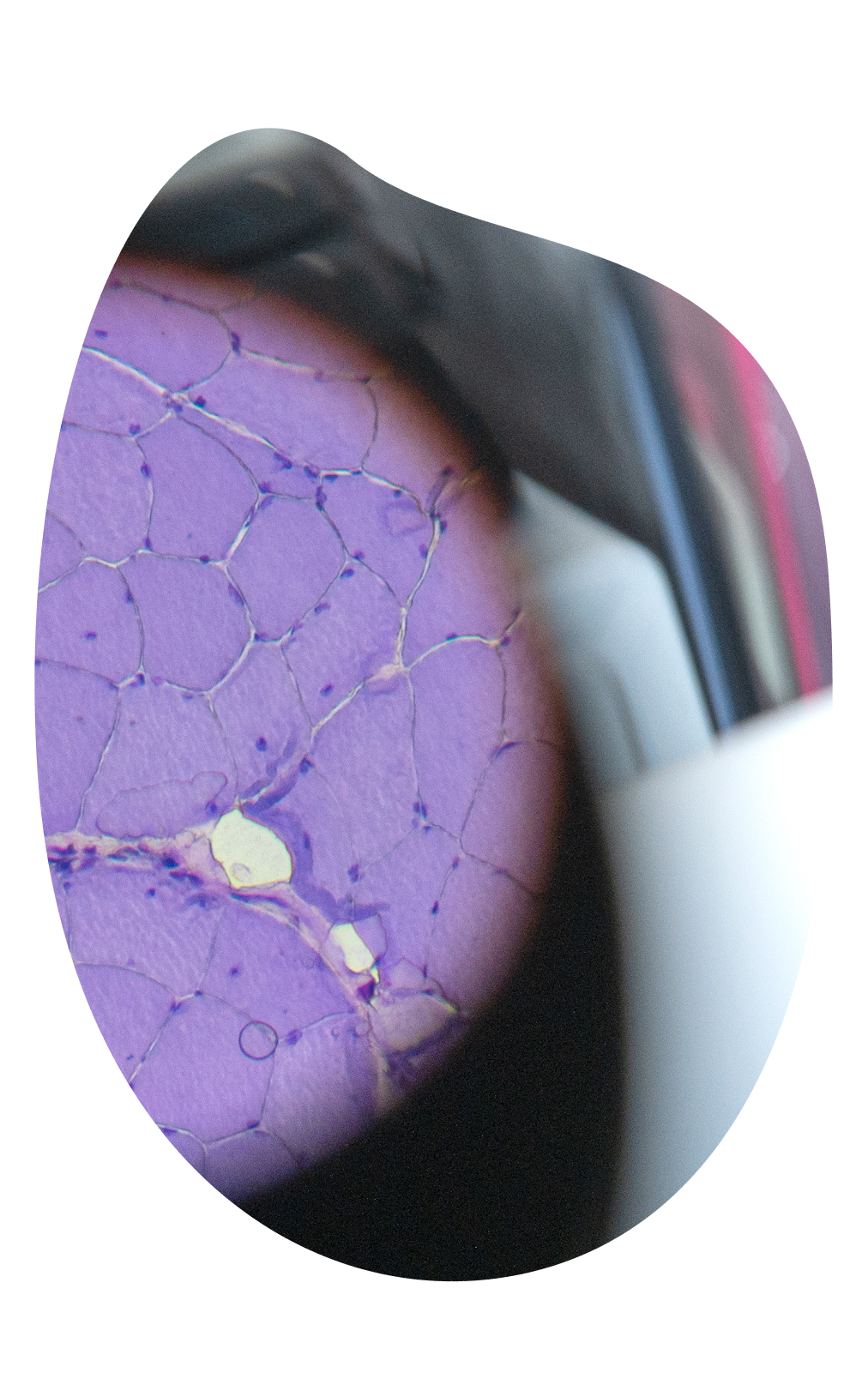A better understanding of mitochondrial diseases
A mitochondrial disease (also known as mitochondrial cytopathy) is a genetic condition that causes mitochondria to malfunction.

Mitochondrion, the energy center of cells
Every cell in the body—with the exception of the red blood cell—has numerous mitochondria to provide the energy it needs to function properly. Using the oxygen we breathe and through numerous chemical reactions, these small organelles transform nutrients from food into ATP (adenosine triphosphate), which is the cell’s “fuel.”

The more energy a tissue needs, the greater the number of mitochondria, ranging from a few hundred to a few thousand per cell. A cardiac or skeletal muscle cell has several thousand mitochondria.
A heart or skeletal muscle cell has several thousand mitochondria.
On the other hand, this production of energy is accompanied by the production of free radicals. These oxidising molecules act like smoke from a power station: in excessive quantities, these compounds can be ‘toxic’ for all the cell’s components.
Finally, the mitochondria is the only organelle to contain its own DNA (mtDNA), in several copies (from 2 to 10) per mitochondria. This is composed of 37 genes that encode proteins necessary for the functioning of the mitochondria. However, the vast majority of mitochondrial proteins (around 1,500) are encoded by the cell’s nuclear DNA.
A big family
Mitochondrial diseases affect the functioning of the vast majority of our organs and tissues. They can occur at any stage of life: at birth, during infancy, adolescence or adulthood. They affect around one person in 4,300 and are due to abnormalities in either mitochondrial DNA (15-20% of cases) or nuclear DNA.
Did you know?
A given mitochondrial DNA mutation is generally present only in some mitochondria of the same cell, and not in all mitochondria. This coexistence of mutated and non-mutated organelles within a cell is called mitochondrial “heteroplasmy.” It influences the risk of transmitting the genetic abnormality to one’s children, but also the severity of the disease, which depends on the proportion of mutated mitochondrial DNA molecules. The rate of heteroplasmy can vary from one tissue to another, which can make it difficult to detect the genetic abnormality and thus delay diagnosis. It is therefore usual to determine the presence or absence of a genetic variant, not in a single tissue but in several, in particular from DNA extracted from the patient’s urinary cells, which represents the elective tissue (after muscle tissue) for the detection or confirmation of the presence of a mitochondrial DNA variant.
This great diversity of symptoms, but also this dual genetic origin, complicates diagnosis, genetic counseling and the development of treatments.

Since mitochondria are present in almost all cells, the same genetic abnormality can impact one or more tissues and cause very different symptoms, some of which are nevertheless more marked than others depending on the pathologies. The organs likely to be affected are mainly tissues that consume a lot of energy such as muscles (muscle weakness), the brain (learning disorders, attention disorders, epilepsy, etc.), the heart (cardiomyopathy, cardiac conduction disorders), the eyes (damage to the retina, optic nerve atrophy), the ears (deafness), the kidneys and the digestive system (difficulty swallowing, diarrhea or constipation, etc.).


The severity of symptoms varies from one mitochondrial disease to another, and sometimes from one person to another for the same disease. Progression is most often slow, with possible phases of exacerbation of symptoms linked to the severity of the efforts produced, an infection, an operation, etc.
Considering mitochondrial disease, a first step towards diagnosis
Varied, unexplained symptoms, with no obvious connection to one another… In these types of situations, it’s important to ask yourself: what if it’s a mitochondrial disease? Medical experts will be able to answer.
A highly variable risk of genetic transmission
Researchers have already identified more than 400 genes responsible for mitochondrial diseases. They can be located:
- on the chromosomes of the cell nucleus (nuclear DNA), the mutated gene can then be transmitted to offspring according to different modes of transmission (autosomal dominant, recessive, X-linked), depending on the mitochondrial disease,
- on mitochondrial DNA, as in MELAS and MERRF syndromes. The genetic mutation can then only be transmitted by the mother because only the mitochondria (and their DNA) of the mother are transmitted during the fertilization stage, not those of the father.
To remember
A man cannot transmit a mitochondrial DNA mutation to his offspring. Only a woman can potentially transmit it.
A consultation for genetic counseling helps clarify the risk of transmitting the genetic mutation to the future children of a person who is a carrier.
